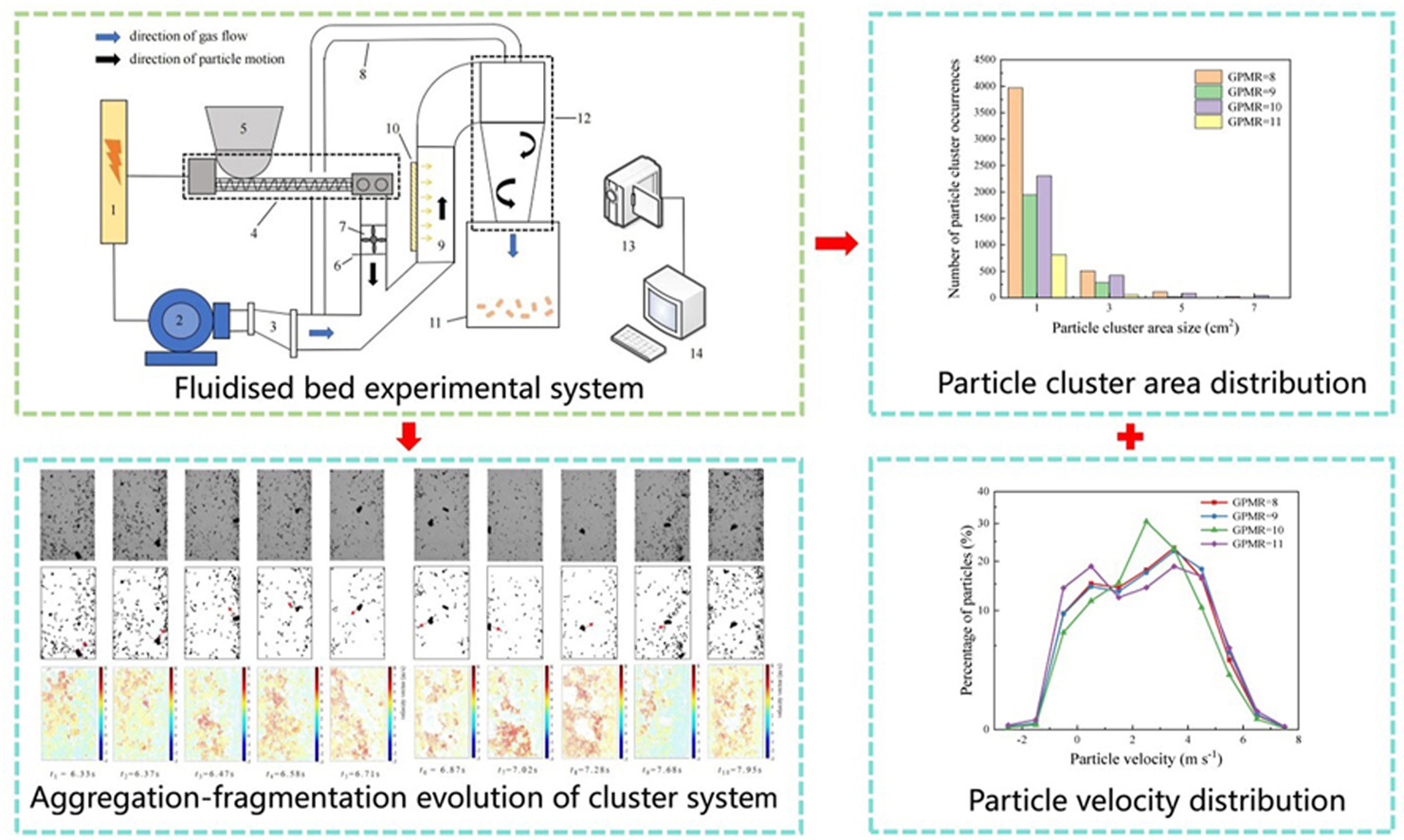• A dimensionless parameter was proposed to describe flow homogeneity of wet elongated biomass particles.
• Statistical methods are used to analyze velocity and area distribution of wet elongated biomass particles.
• Aggregation-fragmentation evolutions of different biomass cluster systems were significantly analyzed.
• PTV was used to experimentally analyzed the flow characteristics of wet elongated biomass particles.
Biomass is a renewable energy source helps reduce greenhouse gas emissions. However, combustion and reaction efficiency of biomass are significantly affected by their flow behavior. In this study, the flow characteristics of wet elongated biomass particles in a lifting tube were experimentally investigated. Particle Tracking Velocimetry (PTV) was used to explore the particle area and velocity distribution under different gas-to-particle mass ratios (GPMR) and initial moisture contents (IMC). A homogeneity coefficient was also formulated to quantify the flow homogeneity of the particle population. The calculated range for the homogeneity coefficient α is 4.43–6.40, with smaller values indicating better flow homogeneity. Moreover, the factors affecting the fragmentation of larger particle clusters were analyzed with respect to the suspension process, the process of being carried out by the airflow, and the fragmentation process. The results indicated that the flow homogeneity of the particle population was better in the two sets of conditions when IMC was 28.7% and GPMR was 10 and when IMC was 32.5% and GPMR was 9. The homogeneity coefficient α was 4.43 and 4.79. In addition, the degree of fragmentation of larger particle clusters is mainly affected by the IMC.

